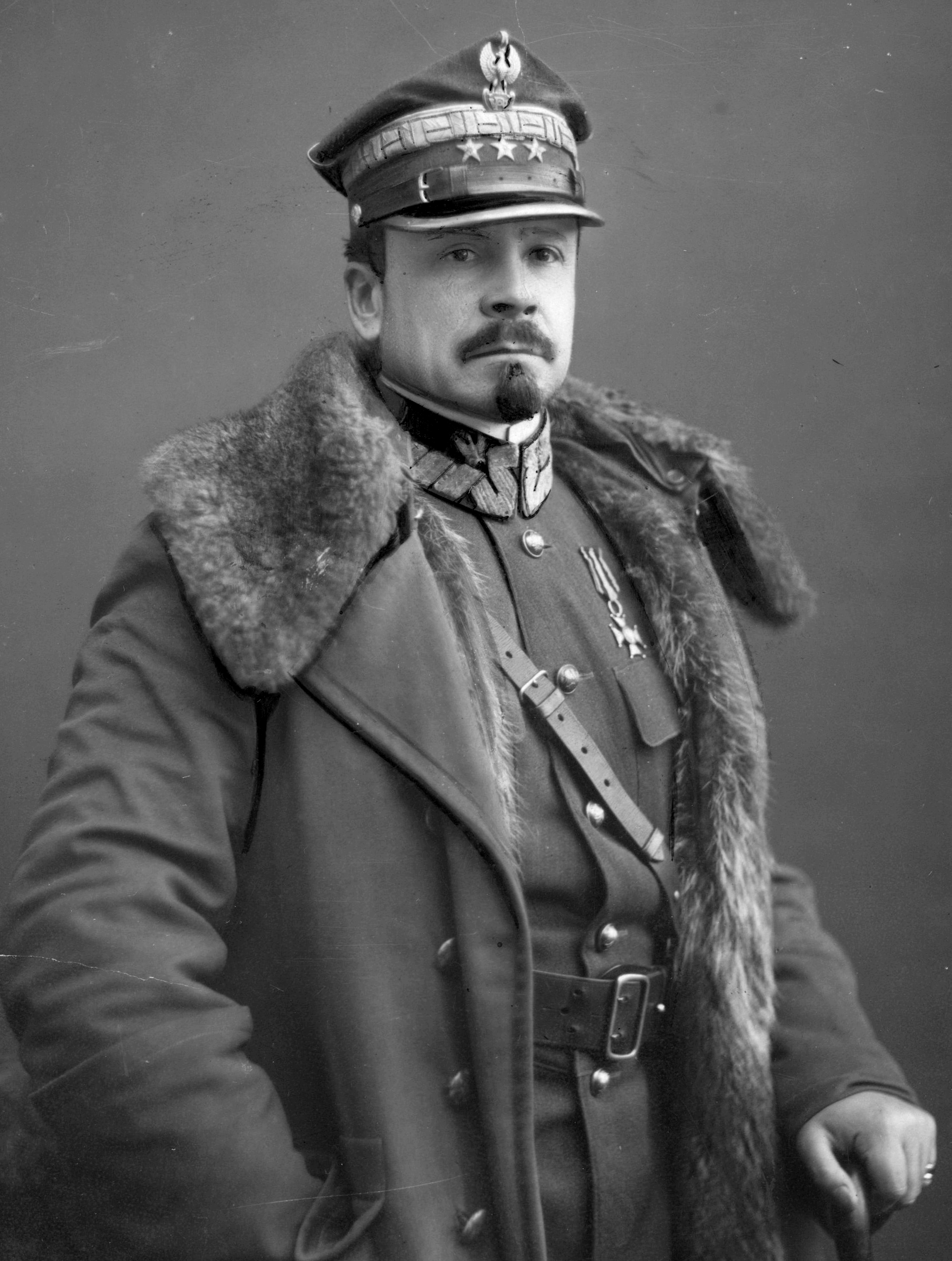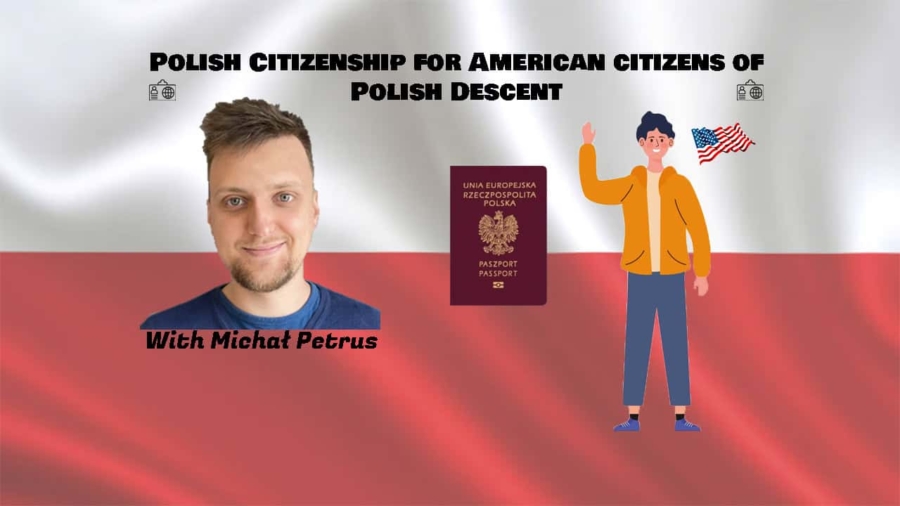This interview with Polish Citizenship Specialist, Michał Petrus, on the topic of Polish citizenship for American citizens of Polish descent follows on nicely from our recent discussions about the range of documents which prove one’s Polish citizenship through ancestry and applying for Polish citizenship from the President of Poland.
Michał is a history and genealogy enthusiast who’s been dealing with cases connected with confirming Polish citizenship by descent since 2019. He represents Your Roots in Poland, a genealogical and citizenship company based in Kraków.
1. We’ve already discussed the topic of Polish citizenship for British citizens of Polish descent. Most of your British clients over the years have claimed their Polish citizenship certificate without any issues as their direct ancestors generally left Poland after 1920 – the year that citizenship was lawfully introduced in Poland. When it comes to the US, it is estimated that 2.2 million Poles and Polish subjects immigrated into the US between 1820 and 1914. With this in mind, would these immigrants have lost their Polish citizenship? How did losing Polish citizenship impact future generations of Polish Americans seeking to claim their Polish citizenship certificates?
❝ With the Polish Americans, we basically need to consider two major immigration waves. The one you just mentioned, that really came about in the second half of the nineteenth century and the very beginning of the twentieth century, is more difficult because there was no Polish state to begin with. Poland only regained its independence in 1918 after existing as a partitioned land for 123 years.
Even though the said immigrants were of Polish nationality and felt Polish, they were subject to three major powers – either the Russian, Austro-Hungarian or German Empires. Therefore, they only had a passport belonging to one of the said Empires to their name.
After the Allied victory in World War One, the Allies stipulated in the 1919 Versailles Treaty that Polish people, if they were stateless after the dissolution of the three said Empires at the end of the war, could cite Polish citizenship instead. This was called the Little Treaty of Versailles. One of the articles of the treaty regulated Polish citizenship for stateless Poles.
Even though there was no Polish state prior to 1918, it is possible to trace Polish citizenship. However, it is more difficult. This is because the applicant needs information from the Polish consulate that somebody claimed their Polish nationality based on the regulations stipulated in the Little Treaty of Versailles. The Polish authorities would also accept proof of domicile in any of the major Empires which later became Polish territory as part of the Second Polish Republic.
There are also multiple other regulations which stipulated that if somebody was born in the US and had US citizenship by the rule of land, they were not allowed to claim Polish citizenship as they were already US citizens. These regulations were administered by the Ministry of Internal Affairs in Poland during the interwar era. Clearly, there are a lot of caveats in cases to do with Polish citizenship for American citizens. Analysis of these cases is rather tiresome for both our clients and us as we have to go through a lot of questions and vetting.
The second immigration after the Second World War is easier for us to handle. For those subjects, it is possible for us to obtain passport questionnaires from Poland as the communist regime paid close attention to immigration from and emigration to Poland back then. We’re also able to obtain photos of ancestors from those passport questionnaires provided that they emigrated from Poland, as opposed to displaced persons camps, after the Second World War.❞
2. Can you speak about the connection between the American Armed Forces and Polish citizens during World War Two? Namely, did many Poles join the American Armed Forces outright, resulting in loss of Polish citizenship? Moreover, we’ve heard of the Polish Armed Forces fighting under British command? Was there a section of the Polish Armed Forces which fought under American command?
❝ I would say that the service of Polish citizens or dual citizens in the US Armed Forces was limited. This is due to historical factors. During the First World War, the Allied Forces – the Entente – agreed that Polish people could enlist into the forces of the Allied powers. This led to the formation of Haller’s Army*, or the “Blue Army”.
In general, Polish people felt discouraged by the formation of Haller’s Army. Even though this Polish military contingent was a huge success, in that it helped with the war effort and also helped defend Poland against the Bolsheviks, Polish people felt like they were not compensated for fighting in the Blue Army. Moreover, the Sanation government of the interwar period did little to help Poles. Therefore, when the Second World War broke out, Poles living in the US were not as eager to join the Polish Armed Forces as they were some 20 years before.
Overall, it was rare for Polish people to join the US Army outright. They were one-off cases. You mentioned the 2nd Polish Corps under British command. We also know that there are some cases in which some people settled in the US, as opposed to the Commonwealth countries, after demobilisation discharge from the 2nd Polish Corps.❞
* What was Haller’s Army?
Roughly 20,000 Polish persons responded to the call to fight for freedom and the opportunity to regain Poland’s independence during World War I in the Polish Army in France. They were recruited from among the Polish immigrants who came to America to fight with France.
The Polish Army in France became known as “Haller’s Army”, after its commander – Polish lieutenant general Józef Haller. Another name for the military unit was the “Blue Army”, owing to the French-issued blue military uniforms the soldiers wore.

3. We’ve spoken in some detail before about the kinds of documents which prove Polish citizenship through ancestry. Can you talk about some of the specific documents out there for American citizens of Polish descent who are looking to get their Polish citizenship confirmed?
❝ The first thing that comes to mind is Haller’s Army. People of Polish origin who were living in Canada or the US that volunteered to join the entente forces then became members of Haller’s Army. Showing that they were part of Haller’s Army can prove that somebody obtained their Polish citizenship in the process. This is because later citizenship acts stipulated that being part of the military meant that someone is also a Polish citizen. These documents belonging to soldiers are fairly well indexed by the Polish historical and genealogical associations in the US, specifically the PGSA. If these documents can’t be located in Poland or in France, they may be held by the Piłsudski Institute of America.❞
4. Can you speak a bit about Polish citizens who became naturalised American citizens both before and after the Polish Citizenship Act of January 8, 1951?
❝ Only after 1951 could Polish people legally have dual or multiple citizenships. Formally speaking, before 1951, holding dual citizenship was prohibited and caused loss of Polish citizenship. However, there is a caveat here – for male ancestors that is. If somebody was fit enough in the eyes of the Polish government to join the Polish military, even if he was hundreds of miles away from Poland, they could not lose Polish citizenship by naturalisation.
Even if the naturalisation in the US says ‘I hereby renounce any allegiance to the Republic of Poland’, it is not valid in the eyes of the Polish government. This is obviously fortunate for us. However, we still need to establish whether the male ancestor was able-bodied to join the army. This involves calculating his military age. The military age changed three times during the interwar period so we take the date of birth of the ancestor and compare it to the dates of military service that were in place according to the three different sets of regulations. Next, we can finally tell whether the ancestor was able to retain his military status up until 1951 when the law changed and Polish citizenship was allowed.
When it comes to acquiring Polish citizenship for American citizens, all hope is not lost if the main ancestor lost his Polish citizenship. If the male ancestor lost his citizenship as he was no longer able to join the Polish military, it’s important for us to check whether his children were adults at the time the ancestor lost his citizenship. If they were adults, they kept their Polish citizenship, regardless of whether their father lost it.
For female ancestors, I’m afraid to say the situation is more straightforward. Any woman that was a Polish citizen, and adopted any other citizenship before 1951, automatically lost her Polish citizenship. However, in 2023, the Supreme Administrative Court of Poland ruled that women could hold dual citizenship simultaneously. For example, let’s say your grandmother was born in the US in 1935. She automatically inherited Polish citizenship from her parents while simultaneously obtaining American citizenship automatically owing to the principle of jus soli – the right of land – in the US.
Based on what I just said, the issue of Polish citizenship for American citizens is only impacted when naturalisation in a foreign land comes after birth. For instance, if your grandmother was born in Poland in 1930 but naturalised in the US in 1940, this is not simultaneous citizenship. Therefore, she lost her Polish citizenship as a result.❞
5. In your experience, do a lot more American people apply for Polish citizenship through the President of Poland as they have more trouble securing the documents which prove lineage or simply their main ancestor emigrated before 1920?
❝With a great number of our American cases, we do, for one, observe that the ancestor emigrated from Poland before 1920. As I’ve already pointed out, this can be problematic when it comes to securing Polish citizenship by descent for American citizens.
Secondly, the ancestor may have lost citizenship due to some unfortunate laws. For example, I remember that we spoke about service in the American Armed Forces in the Korean War in a previous interview. This war began a year before the Polish citizenship act of 1951. Therefore, service would be a cause of loss of citizenship for a lot of Polish-Americans.
Let’s also not forget that dual citizenship may not have been protected by the “military paradox” law. For example, maybe the ancestor missed out on eligibility for the Polish military draft by being born a year too early.
Nevertheless, there is still hope for descendants of such Polish ancestors. It’s important to gather evidence of professional merits, Polish language ability and working with Polish NGOs. In such a way, it’s possible to submit a convincing presidential application.❞
Final thoughts
With admirable knowledge of Polish citizenship law, I believe that Michał has given hope to countless Americans whose gut feeling may be that the road to Polish citizenship for American citizens of Polish descent is a long and painstaking one.
Even if your Polish ancestor left Poland before 1920, there are still several avenues to explore when it comes to securing your Polish citizenship certificate.
Reference:
Kubiak, H., Kusielewicz, E., and Gromada, T. (1988). Polonia amerykańska: Przeszłość i współczesność. Wrocław: Zakład Narodowy im. Ossolińskich, 1988.

